LATA MANGESHKAR
Early Life of Lata Mangeshkar
Lata Mangeshkar is one of the legends of the Hindi film industry who has more than 30,000 solo, duet and chorus backed songs in 20 different languages from 1948 to 1987. Of course mow it must have crossed more than 40,000 songs. Lata Mangeshkar also takes the credit of being recorded in the Guinness Book of World Records for the category of the highest number of songs sung by her.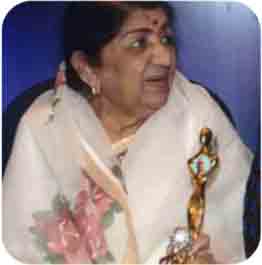 Lata Mangeshkar was born in a Marathi-speaking Gomantak Maratha family on 28th September, 1929 in Indore in the state of Madhya Pradesh as the first daughter to Pandit Dinanath Mangeshkar and mother Shudhmati. Shudmathi was the second wife of Pandit Deenanath Mangeshkar and she was from Thalner in Maharashtra. Pandit Deenanath had Hardikar as his family name but changed it to Mageshkar in order to identify his family with his native town, Mangeshi in Goa. When Lata Mangeshkar was born she was named as Hema by her parents who was later renamed to Lata after the female character, Latika, in one of her father's plays, BhaawBandhan.Dinanath Mangeshkar who was a classical singer and a theatre actor belonged to Gomantak Maratha Samaj.
Lata Mangeshkar was born in a Marathi-speaking Gomantak Maratha family on 28th September, 1929 in Indore in the state of Madhya Pradesh as the first daughter to Pandit Dinanath Mangeshkar and mother Shudhmati. Shudmathi was the second wife of Pandit Deenanath Mangeshkar and she was from Thalner in Maharashtra. Pandit Deenanath had Hardikar as his family name but changed it to Mageshkar in order to identify his family with his native town, Mangeshi in Goa. When Lata Mangeshkar was born she was named as Hema by her parents who was later renamed to Lata after the female character, Latika, in one of her father's plays, BhaawBandhan.Dinanath Mangeshkar who was a classical singer and a theatre actor belonged to Gomantak Maratha Samaj.Lata Mangeshkar was born along with four siblings, her brother named Hridayanath Mangeshkar and three sisters by name Asha Bhosle, Usha, and Meena of which we all know about the legendary singer Asha Bhosle. Latha Mangeshkar was also a professional rival to her sister Asha Bhosle. Her father Pandit Dinanath Mangeshkar was her first teacher who instilled in her the seed for singing. Even as she was five years old she started working as theatre artist in Sangeet Nataks. Even when she went to schools she started teaching music to other children in the school which the teachers wouldn't encourage and so they stopped her from coming to school.
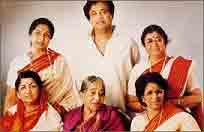 But there are also other reasons which states that she stopped going to school because she was not allowed to bring her younger sister Asha along with her. As an unmarried young girl and at the age of 13 the first song which she recorded for a movie was in the Marathi language for the Marathi film in 1942 named Kiti Hasaal. But however her father was not really very happy for her daughter who was singing in movie songs.
But there are also other reasons which states that she stopped going to school because she was not allowed to bring her younger sister Asha along with her. As an unmarried young girl and at the age of 13 the first song which she recorded for a movie was in the Marathi language for the Marathi film in 1942 named Kiti Hasaal. But however her father was not really very happy for her daughter who was singing in movie songs.So her first recorded song was removed from the Marathi movie. Unfortunately in the same year Lata Mangeshkar lost her father and the family had to face a lot of financial crisis. To overcome this situation she decided to small roles in Hindi and Marathi movies though she was not interested in acting. After her father's death Master Vinayak (Vinayak Damodar Karnataki) who was the owner of Navyug Chitrapat movie company and a close friend of the Mangeshkar family, took care of them. It was he who helped Lata get started in a career as a singer and actress.
Career
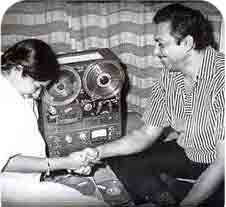 As already mentioned her debut was for a Marathi movie in 1942 where she sang "Naachu Yaa Gade", Khelu Saari Mani Haus Bhaari" composed by Sadashivrao Nevrekar for Vasant Joglekar's Marathi movie Kiti Hasaal. But for some reason this was dropped from the movie. However she sang the first Hindi song in 1943 and it was Mata Ek Sapoot Ki Duniya Badal De Tu". In 1945 she along with her family members shifted to Mumbai and there she took lessons in Hindustani classical music from Ustad Amanat Ali Khan .
As already mentioned her debut was for a Marathi movie in 1942 where she sang "Naachu Yaa Gade", Khelu Saari Mani Haus Bhaari" composed by Sadashivrao Nevrekar for Vasant Joglekar's Marathi movie Kiti Hasaal. But for some reason this was dropped from the movie. However she sang the first Hindi song in 1943 and it was Mata Ek Sapoot Ki Duniya Badal De Tu". In 1945 she along with her family members shifted to Mumbai and there she took lessons in Hindustani classical music from Ustad Amanat Ali Khan .Also in the same year both Lata and her younger sister Asha Bhosle played a very small role in the movie Badi Maa which was Vinayak's first Hindi movie. After the partition of India and Pakistan her master Ustad Amanat Ali Khan migrated to Pakistan and so she has to learn classical music from Amanat Khan Devaswale and later from Amanat Khan Devaswale. Though during the early days of Lata's career her voice is rejected by many music composers so as not as good as the then contemporary of her the acclaimed singer Noor Jehan.
However her mentor Ghulam Haider gave a break for Lata in the song "Dil Mera Toda", from the movie Majboor in 1948. However this song was a break one of the major hit given by her was "Aayega Aanewaala",a song in the movie Mahal (1949), which was composed by music director Khemchand Prakash and lip-synced on screen by actress Madhubala.
Lata was slowly gaining popularity in the 1950's were she sang number of songs under various music directors like Anil Biswas (in films such as Tarana and Heer), Shankar Jaikishan, Naushad Ali, S. D. Burman, Pandit Husan Lal Bhagat Ram (in films like Bari Behan, Meena Bazaar, Afsana, Aadhi Raat, Ansoo, Chhoti Bhabi, Adal-e-Jehangir) C. Ramchandra, Hemant Kumar, Salil Chowdhury, Khayyam, Ravi, Sajjad Hussain, Roshan, Kalyanji-Anandji, Vasant Desai, Sudhir Phadke, Hansraj Behl, Madan Mohan, and Usha Khanna.
She gave her first song in tamil in 1956 in the movie Vanaradham and the song was Enthan Kannalan composed by the popular Naushad. Lata Mangeshkar's association with C. Ramchandra produced songs in movies such as Anarkali, Albela, Asha, Pehli Jhhalak, Shin Shinkai Bublaa Boo, Azad and Amardeep. For Madan Mohan, she performed for films like Adalat, Railway Platform, Dekh Kabira Roya and Chacha Zindabad.
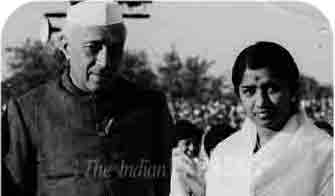 Apart from duet based songs Lata worked on number of raga based songs in movies like Baiju Bawra (1952), Mughal-E-Azam (1960), and Kohinoor (1960). She won her first film fare award in 1958 itself for the song " Aaja Re Pardesi," from Madhumati and the second one in 1962 for the song Kahin Deep Jale Kahin Dil" from Bees Saal Baad, composed by Hemant Kumar. Her patriotic song "Aye Mere Watan Ke Logo" which was sung in 1963 based on the Sino-Indian War, amidst the then Prime Minister of India is said to have brought tears to Nehru. This song was composed by C. Ramchandra and written by Kavi Pradeep.
Apart from duet based songs Lata worked on number of raga based songs in movies like Baiju Bawra (1952), Mughal-E-Azam (1960), and Kohinoor (1960). She won her first film fare award in 1958 itself for the song " Aaja Re Pardesi," from Madhumati and the second one in 1962 for the song Kahin Deep Jale Kahin Dil" from Bees Saal Baad, composed by Hemant Kumar. Her patriotic song "Aye Mere Watan Ke Logo" which was sung in 1963 based on the Sino-Indian War, amidst the then Prime Minister of India is said to have brought tears to Nehru. This song was composed by C. Ramchandra and written by Kavi Pradeep.She gave a number of hits in combination with R. D. Burman like Bhoot Bangla (1965), Pati Patni (1966), Baharon ke Sapne (1967) and Abhilasha (1969). Some of her hits with S. D. Burman are "Aaj Phir Jeene Ki Tamanna Hai", "Gata Rahe Mera Dil" (duet with Kishore Kumar) and "Piya Tose" from Guide (1965), and "Hothon Pe Aisi Baat" from Jewel Thief (1967).
The most popular and evergreen favourites of Lata Mangeshkar was given in combination with the great music directors Laxmikant-Pyarelal Lata Mangeshkar sang over 700 songs for the composer duo over a period of 35 long years, most of which became huge hits. She sang for Parasmani (1963), Mr. X in Bombay (1964), Aaye Din Bahar Ke (1966), Milan (1967), Anita (1967) Shagird (1968), Mere Hamdam Mere Dost (1968), Intaquam (1969), Do Raaste (1969) and Jeene Ki Raah for which she got her 3rd Film fare Award.
Lata Mangeshkar also worked with a number of Marathi music composers like Hridaynath Mangeshkar, Vasant Prabhu, Srinivas Khale and Sudhir Phadke. She also did quite a few numbers in Bengali with music composers like Salil Chowdhury and Hemant Kumar. Her debut in the Kannada movie industry was in the year 1967 with the music director Lakshman Berlekar for the film Krantiveera Sangolli Rayanna. Lata Mangeshkar has sung a number of duets with Mukesh, Manna Dey, Mahendra Kapoor, Mohammed Rafi, and Kishore Kumar.
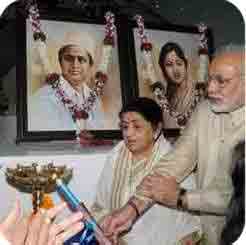 During the 1970's Lata Mangeshkar recorded many songs for S.D. Burman like "Rangeela Re" from Prem Pujari (1970), "Khilte Hain Gul Yahaan" from Sharmeelee (1971), and "Piya Bina" from Abhimaan (1973). SOme of her very famous songs for the legend Madan Mohan's last few films, include Dastak (1970), Heer Raanjha (1970), Dil Ki Rahen (1973), Hindustan Ki Kasam (1973), Hanste Zakhm (1973), Mausam (1975) and Laila Majnu (1976).
During the 1970's Lata Mangeshkar recorded many songs for S.D. Burman like "Rangeela Re" from Prem Pujari (1970), "Khilte Hain Gul Yahaan" from Sharmeelee (1971), and "Piya Bina" from Abhimaan (1973). SOme of her very famous songs for the legend Madan Mohan's last few films, include Dastak (1970), Heer Raanjha (1970), Dil Ki Rahen (1973), Hindustan Ki Kasam (1973), Hanste Zakhm (1973), Mausam (1975) and Laila Majnu (1976).But however the most notabe songs sung by Lata Mangeshkar in the 1970's include those that were composed by Laxmikant-Pyarelal (Laxmi-Pyare) and Rahul Dev Burman. Her hits with R.D. Burman in this period are Amar Prem (1972), Caravan (1971), Kati Patang (1971), and Aandhi (1975). Also she won the National Film Award for Best Female Playback Singer for the song "Beeti Na Bitai" from the film Parichay which was composed by R.D. Burman in the year 1973.
Apart from her recordings this is the period Lata Mangeshkar started with her performance of stage concerts both within the country and abroad. She worked with her brother Hridaynath Mangeshkar's composing for a number of private albums and bhajans of which the most famous are "Saanware Rang Raachi" and "Ud Jaa Re Kaaga". Her other collections composed both by Shrinivas Khale and Hridaynath Mangeshkar includes Ghalib ghazals, an album of Marathi folk songs (koli-geete), an album of Ganesh aartis.
The blockbuster hit of 1978 is her "Satyam Shivam Sundaram" theme song directed by Raj Kapoor. In the 1980 she worked with a number of the then extremely good music directors like Shiv-Hari in Silsila (1981), Faasle (1985), Vijay (1988) and Chandni (1989). Ram Laxman in Ustadi Ustad Se (1981), Bezubaan (1982), Woh Jo Hasina (1983), Ye Kesa Farz (1985) and Maine Pyar Kiya (1989) which was a musical hit. During the 1990s, she recorded with music directors including Anand-Milind, Nadeem-Shravan, Jatin Lalit, Dilip Sen-Sameer Sen, Uttam Singh, Anu Malik, Aadesh Shrivastava and A. R. Rahman.
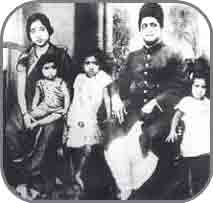 She recorded some non-film songs, including ghazals with Jagjit Singh. She has also sung with S. P. Balasubrahmanyam, Udit Narayan, Hariharan, Kumar Sanu, Suresh Wadkar, Mohammed Aziz, Abhijeet Bhattacharya, Roop Kumar Rathod, Vinod Rathod, Gurdas Maan and Sonu Nigam. Apart from music she did lot of charity work like she laid the foundation for the Master Deenanath Mangeshkar Hospital in Pune.
She recorded some non-film songs, including ghazals with Jagjit Singh. She has also sung with S. P. Balasubrahmanyam, Udit Narayan, Hariharan, Kumar Sanu, Suresh Wadkar, Mohammed Aziz, Abhijeet Bhattacharya, Roop Kumar Rathod, Vinod Rathod, Gurdas Maan and Sonu Nigam. Apart from music she did lot of charity work like she laid the foundation for the Master Deenanath Mangeshkar Hospital in Pune.Lata Mangeshkar is also quite interested in designing jewelry. In 2005 she exhibited a jewellery collection in the name Swaranjali crafted by Adora, an Indian diamond export company. The money raised through this exhibition was donated for the 2005 Kashmir earthquake relief fund.


